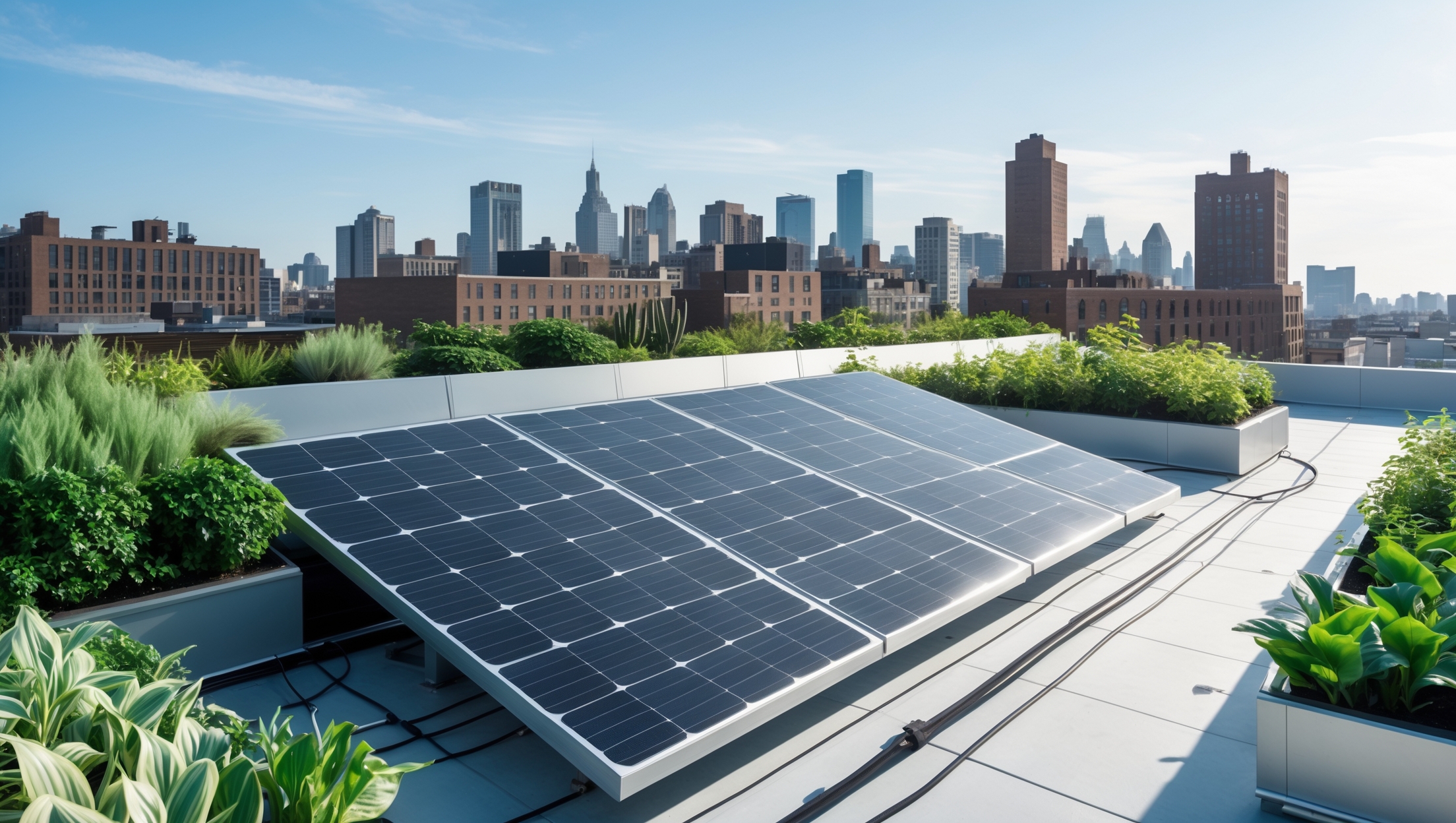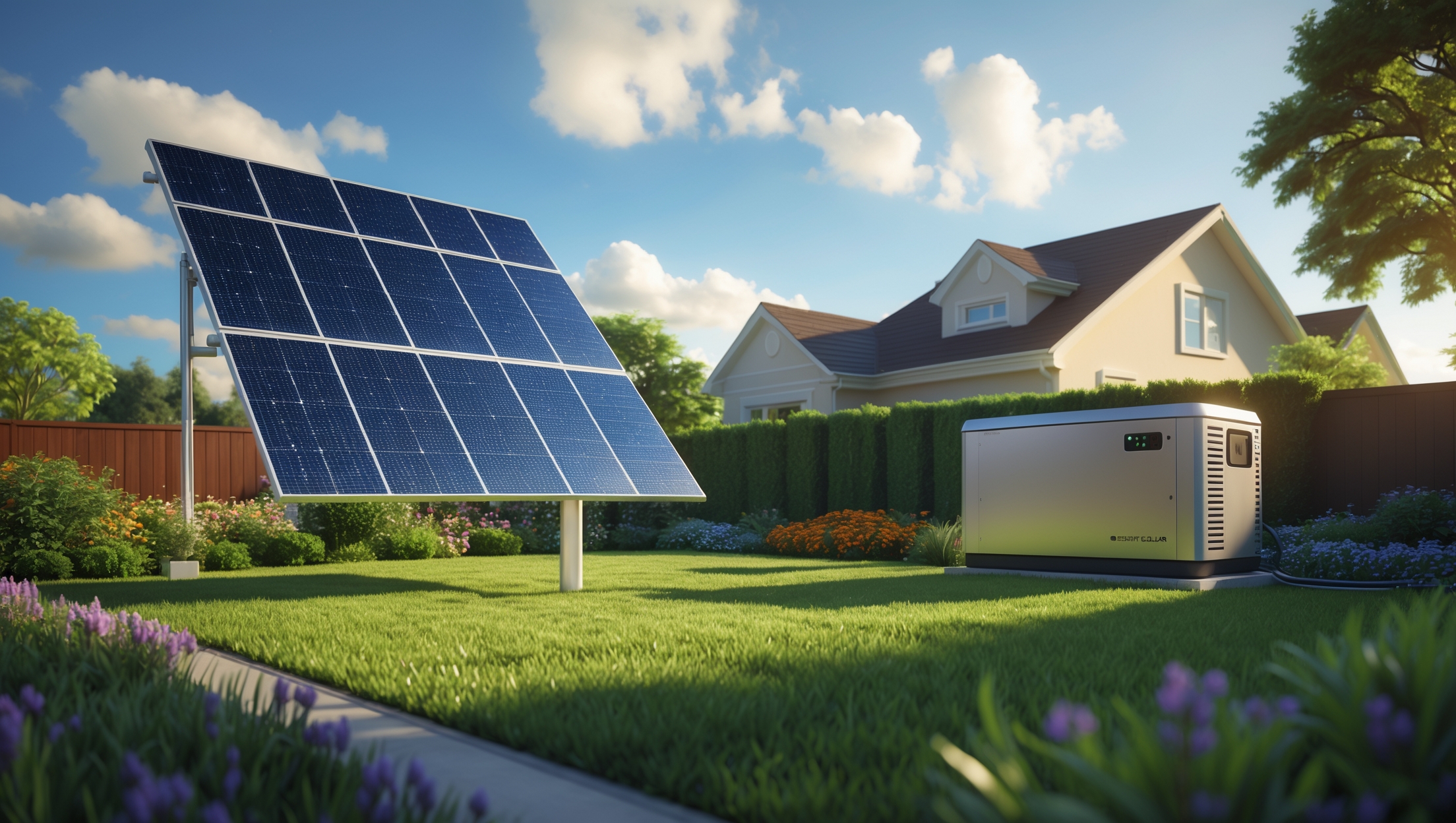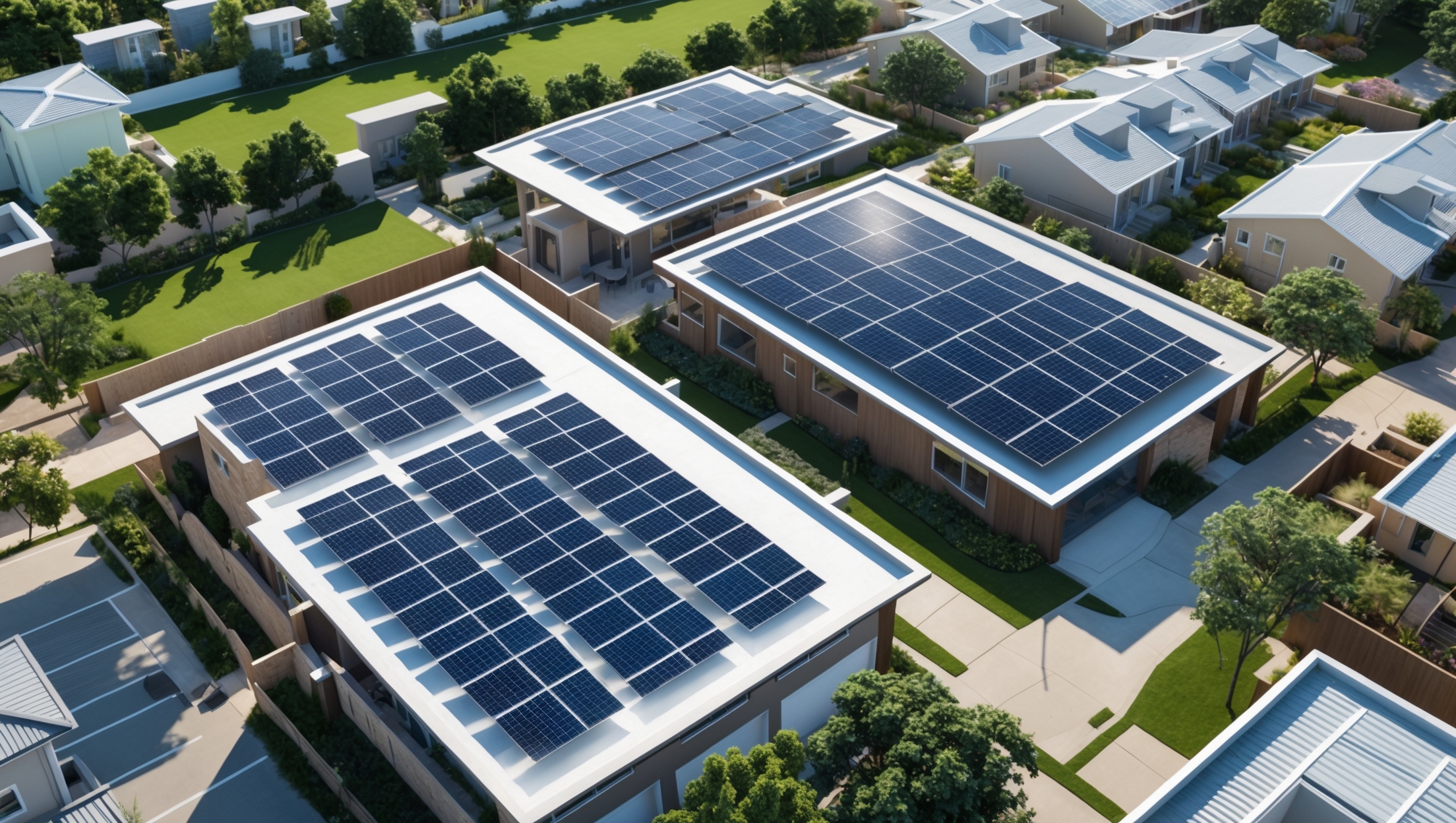Introduction: The Rise of Solar-Powered Green Roofs in Urban Living
As urban populations swell and cities grapple with the dual challenges of climate change and energy demand, innovative solutions like solar-powered green roofs are rapidly gaining traction. These hybrid systems merge the benefits of vegetative roofing—such as stormwater management, insulation, and biodiversity—with the clean energy production of photovoltaic panels. Together, they transform underutilized roof space into sustainable powerhouses that cool buildings, generate renewable energy, and mitigate urban heat. Yet, before you can enjoy the environmental and economic rewards of a solar-green roof, there’s a crucial maze to navigate: compliance and permits. Regulations for these projects are multifaceted, involving building codes, zoning laws, fire safety, electrical standards, and sometimes even historic preservation. Skipping or misunderstanding these steps can lead to costly delays, fines, or even forced removal of your system. This comprehensive guide will walk you through the critical compliance considerations and permit processes for home solar-powered green roofs, empowering you to create a future-ready oasis on your rooftop—legally and safely.
Understanding Solar-Powered Green Roofs: System Overview
What is a Solar-Powered Green Roof?
A solar-powered green roof is an integrated system that combines living vegetation (typically sedum, grasses, or wildflowers) with photovoltaic (PV) solar panels. The synergy of these components offers enhanced building performance: the plants help cool the panels, improving their efficiency, while the panels provide shade and reduce evaporation for the plants. This dual-purpose use of space is especially valuable in dense urban environments.
Types of Green Roofs Suitable for Solar Integration
- Extensive Green Roofs: Lightweight, shallow substrate (2–6 inches), low maintenance, suitable for most homes.
- Intensive Green Roofs: Deeper soil (6+ inches), supports shrubs or small trees, heavier, requires robust structure.
Most residential projects use extensive designs for ease of compliance and structural compatibility.
Researching Local Regulations: The Foundation of Compliance
Building Codes and Structural Requirements
Before you design your system, consult your city or county building department. Key areas of focus include:
- Load Bearing Capacity: Green roofs with solar panels significantly increase roof load. Codes specify minimum load requirements and may require structural assessments by licensed engineers.
- Roof Access and Safety: Codes often mandate safe access (stairs or ladders), guardrails, and designated walkways for maintenance.
- Waterproofing and Drainage: Building codes require robust waterproof membranes and drainage layers to prevent leaks and structural damage.
Zoning and Land Use Considerations
Zoning laws dictate how properties can be used and modified. Common zoning issues include:
- Height Restrictions: Solar panels and growing media can add inches or feet to total building height. Exceeding local limits may require a variance.
- Setbacks: Some codes require that rooftop installations are set back from roof edges, especially for fire safety or aesthetics.
- Landmark or Historic Districts: Older neighborhoods may have additional review processes to preserve architectural character.
Fire Safety Codes
Fire safety is a top regulatory concern. Many jurisdictions have adopted guidelines from the International Building Code (IBC) or National Fire Protection Association (NFPA):
- Firebreaks: Non-combustible pathways (often gravel or pavers) around green roof sections and solar panels.
- Material Ratings: Roofing materials, substrates, and vegetation must meet fire resistance standards.
- Access for Firefighters: Codes may require clear routes for emergency personnel.
Electrical and Renewable Energy Permitting
Solar installations are subject to electrical codes (such as the NEC in the U.S.) and often require:
- Electrical Permits: Ensures wiring, inverters, and interconnections meet safety standards.
- Utility Interconnection Agreements: If you plan to connect to the grid, your utility must approve your system for net metering or grid feedback.
- Inspection Schedules: Electrical inspectors may visit at multiple stages—after wiring, before covering, and after completion.
Step-by-Step Permit Process for Solar-Powered Green Roofs
Step 1: Consult Local Authorities Early
Start by contacting your municipal building department and zoning office. Ask for information packets, application checklists, and relevant ordinances. Some cities even have sustainability coordinators to guide green projects.
Step 2: Hire Qualified Professionals
Many jurisdictions require designs to be stamped by a licensed architect or structural engineer. Look for professionals with experience in both green roofs and solar installations. Their expertise ensures compliance and smooth permit approval.
Step 3: Prepare Detailed Plans and Documentation
- Site Survey: Roof measurements, slope, access points, and obstructions.
- Structural Analysis: Calculations showing roof can safely bear new loads. May require core sampling of existing roof.
- System Design: Detailed drawings showing layout of vegetation, solar panels, waterproofing, drainage, and access paths.
- Product Specifications: Data sheets for soil, plants, membrane, mounting racks, solar modules, and inverters.
- Fire Safety Plan: Locations of firebreaks, non-combustible zones, and emergency access routes.
- Electrical Diagrams: Wiring schematics, inverter placement, and grid interconnection points.
Step 4: Submit Permit Applications
Most projects require at least two permits:
- Building Permit: Covers structural changes, green roof installation, and access features.
- Electrical Permit: For solar panel wiring and grid connection.
Some cities combine permits for sustainable projects, but most will require separate reviews. Include all supporting documents and pay applicable fees.
Step 5: Respond to Plan Review Comments
Officials may request clarifications or changes. Common review issues include:
- Insufficient structural documentation
- Unclear firebreak locations
- Electrical code conflicts
- Height or setback encroachments
Work with your professional team to provide revisions promptly.
Step 6: Schedule Inspections
Typical inspections include:
- Pre-installation: Verifies existing roof condition and access.
- Mid-construction: Checks waterproofing, drainage, electrical rough-in.
- Final: Ensures full compliance with approved plans and safety standards.
Do not skip inspections—unpermitted work can result in forced removal or fines.
Special Considerations for Urban Environments
Historic and Landmark Properties
If your home is in a historic district or is itself a landmark, expect additional scrutiny. You may need approval from a preservation board, and visible solar panels may be restricted or require creative integration (such as mounting panels behind parapets or using thin-film PV that conforms to existing rooflines).
Stormwater and Environmental Regulations
Many cities encourage green roofs because they reduce runoff and filter pollutants. However, you may need to submit a stormwater management plan. Some jurisdictions offer fast-track permits or fee reductions for projects that provide documented environmental benefits.
Urban Wildlife and Biodiversity
Local ordinances may favor native plantings or restrict invasive species. Designing for pollinators and native birds can also improve permit prospects and qualify for green infrastructure incentives.
Common Permit Pitfalls and How to Avoid Them
- Underestimating Roof Load: Always base your design on a professional structural analysis. “Eyeballing” can lead to disaster.
- Ignoring Height Limits: Even a few inches of extra height from solar panel racks can trigger violations. Check limits before ordering materials.
- Overlooking Fire Code Details: Failing to plan for firebreaks or using flammable materials can result in denied permits or forced redesign.
- Incomplete Documentation: Inadequate plans or missing product specifications are a leading cause of permit delays.
- Skipping Neighborhood Consultation: Some cities require you to notify or get approval from neighborhood associations or adjacent property owners.
Incentives and Fast-Track Permitting Programs
Many municipalities offer incentives for installing green roofs and solar panels, including:
- Permit Fee Reductions: Discounts for projects that meet sustainability criteria.
- Expedited Review: Dedicated staff or streamlined processes for green infrastructure.
- Tax Credits and Rebates: State and federal incentives can offset costs, but often require proof of permitted installation.
Check with your city’s sustainability office for current programs—proper permitting is often a prerequisite for these benefits.
Case Example: Navigating Permits for a Brooklyn Brownstone Green Roof
Consider a homeowner in Brooklyn, NY, aiming to add a sedum green roof with 4 kW of solar panels. The process involved:
- Consulting NYC Department of Buildings for building and electrical permits
- Hiring a structural engineer to assess the 100-year-old roof framing
- Coordinating with the Landmarks Preservation Commission due to the historic district
- Submitting stormwater management plans to comply with city “Green Infrastructure” incentives
- Scheduling multiple inspections: waterproofing, mounting, electrical, and final green roof approval
This thorough approach resulted in full approval, a $5,000 grant, and a sustainable rooftop that now lowers energy bills and adds urban habitat.
Tips for a Smooth Permit Journey
- Start Early: Permitting can take weeks or months, especially if multiple agencies are involved.
- Document Everything: Keep copies of all communications, drawings, and approvals.
- Communicate with Neighbors: Address concerns about construction noise, views, or shading proactively.
- Work with Experienced Installers: Pros familiar with local codes can anticipate and avoid common pitfalls.
Conclusion: Building a Future-Ready Urban Oasis—Legally and Responsibly
Solar-powered green roofs are a beacon of sustainable urban living, transforming unused rooftop space into vibrant, productive, and energy-efficient assets. However, the path to a successful installation is paved with regulatory requirements. Navigating the complexities of building codes, zoning, fire safety, and electrical permits may seem daunting, but with thorough preparation and expert guidance, you can turn your vision into reality. Start by researching your local requirements and assembling a skilled team. Invest in precise documentation and maintain open communication with officials and neighbors alike. Remember, proper permitting is not just a legal formality—it protects your investment, ensures safety, and qualifies you for valuable incentives. By respecting the regulatory process, you not only avoid costly mistakes but also set a positive example for sustainable innovation in your community. Your solar-powered green roof will do more than save energy and manage stormwater; it will inspire others and contribute to a greener, healthier urban future. Take the first step, navigate compliance with confidence, and watch your rooftop flourish as a model of green technology in action.





What kind of timeline should someone expect for navigating all the compliance and permit steps before starting installation of a solar-green roof system on a typical urban home?
For a typical urban home, expect the compliance and permit process for a solar-green roof system to take anywhere from 2 to 4 months. This includes gathering necessary documents, submitting applications, and waiting for approvals from different agencies. Some cities may have faster or slower timelines depending on their workload and review processes, so it’s smart to check with your local permitting office early on.
I’m really interested in the extensive green roof system because of the lower maintenance, but does the permit process change depending on whether you choose extensive or intensive green roofs? Are there certain types that cities approve more easily for residential solar projects?
Yes, the permit process can differ between extensive and intensive green roofs. Extensive systems, being lighter and lower maintenance, are often easier for cities to approve, especially when paired with residential solar. Intensive green roofs may require more detailed structural reviews due to their weight and complexity, and the approval process can take longer. Most cities tend to favor extensive systems for homes because they present fewer engineering challenges.
I’m planning to add a solar-powered green roof to my townhouse, but I’m worried about meeting both electrical and fire safety regulations. Can you shed more light on what common hurdles homeowners run into with these dual code requirements?
Homeowners often face challenges ensuring that both solar electrical systems and green roofing materials comply with local codes. Common issues include proper placement and wiring of solar panels, using fire-resistant vegetation or barriers, and ensuring access paths for firefighters. Coordinating inspections between building, electrical, and fire departments can also take extra time. It’s helpful to work with professionals experienced in combined systems and to check your city’s specific code requirements early in your planning.
For someone budgeting their project, what kinds of inspection or application fees should homeowners expect when seeking permits for a combined solar and green roof system? Are there usually additional city surcharges because of the dual components?
When budgeting for permits on a combined solar and green roof project, homeowners can expect to pay separate application and inspection fees for both the solar energy system and the green roof, as most cities treat them as distinct components. There are often additional surcharges or administrative fees for the dual review process, especially in larger cities. The total cost varies widely by location but typically ranges from a few hundred to over a thousand dollars. It’s best to contact your local building department to get a precise breakdown of all applicable fees.
If my house has a historic designation, what additional compliance steps or permit challenges should I expect when trying to install a solar-powered green roof? The article mentioned historic preservation could complicate things, and I’m not sure where to start.
If your house has a historic designation, you’ll likely need approval from your local historic preservation board in addition to standard building permits. This can involve submitting detailed plans showing how the solar panels and green roof will affect the appearance and structure of your home. Some areas require materials or designs that preserve the historic character. It’s best to contact your local preservation office early to learn about their specific requirements and avoid delays.
The article mentions fire safety and electrical standards. Are there design choices or certain types of vegetation that make it easier to pass these inspections, or is it mainly dependent on city-specific codes?
Some design choices and vegetation types can help with passing fire safety and electrical inspections. For example, using thin, low-growing, and fire-resistant plants like succulents can reduce fire risk. Spacing plants properly and avoiding flammable mulches also helps. However, the main requirements will still depend on your city’s specific codes, so always check those first to make sure your design aligns with local regulations.